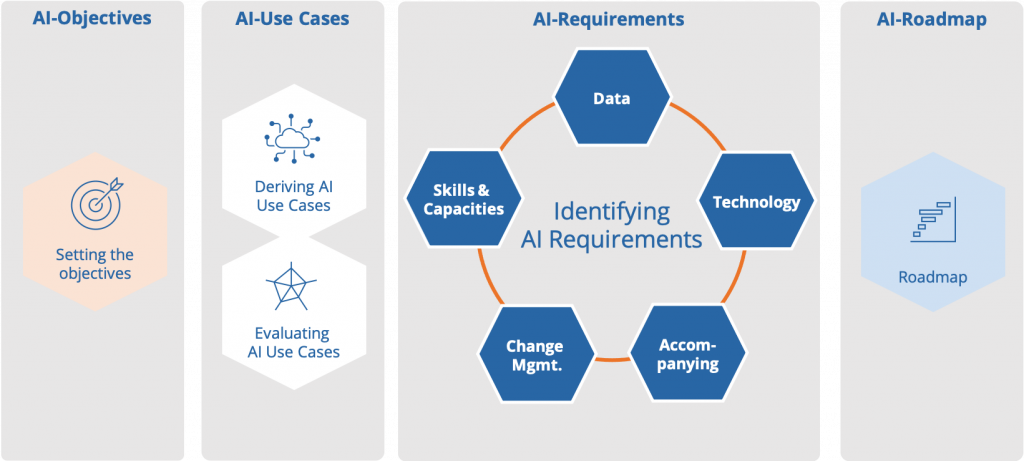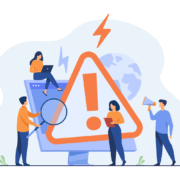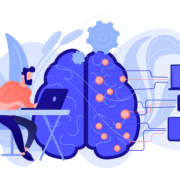Successfully develop an AI strategy
Do companies actually need an AI strategy? It is probably less a question of “if” and more of the question of when it is too late to deal with AI. Developments in this area are rapid. In every company there are activities that can be automated and are based on an “if – then” logic. The fields of application of artificial intelligence range from data analysis and chatbots to new services, products and business models.
So, an AI strategy is essential to ensure your business is using AI strategically – in a way that ties directly to business goals. Developing an AI strategy means identifying how your company can best use AI. It is irrelevant whether the result represents an independent AI strategy or whether the findings are incorporated into the corporate strategy. It is important that companies think carefully about the use of artificial intelligence in their company.
Below you will learn what elements an AI strategy includes and how best to proceed to develop an AI strategy for your company.
The development of an AI strategy in the company
Below you will learn what elements an AI strategy includes and how best to proceed to develop an AI strategy for your company.

Development of an AI strategy with ConWISE
Step 1: Set AI goals and define use cases
As a first step, you should think about what goals you want to pursue with the use of artificial intelligence in the company. And what benefits the company should derive from AI. The result is an AI prioritization and the definition of concrete use cases for the company.
Possible AI goals could include:
- Develop new intelligent products or services
- Make business processes smarter
- Automate repetitive business tasks
- Automate manufacturing processes
The above goals are often implemented in the context of the following AI application fields:
- Use of sensors for the “Internet of Things (IoT)”
- Predicting Outcomes
- Decision Support / Augmented Intelligence
- Pattern recognition by highlighting non-obvious data relationships
- Personalized customer interaction
- Job and task automation
- Big Data Analytics
- behavioral analysis
- Visual recognition and classification
- Speech recognition and natural language processing
Step 2: Prioritize use cases
Experience has shown that a large number of possible applications emerge from the first step above. These now need to be prioritized. You should concentrate on the top 3 applications. In addition, you can already identify so-called quick-win initiatives in this step. These are short-term AI projects that can help you demonstrate the value of AI in a relatively quick, easy, and inexpensive way.
Step 3: Identify requirements
Next, take on the core AI requirements. AI use cases usually have some common themes that need to be considered or that must be met as a prerequisite. Your task is to identify the challenges in order to close any gaps in the company.
The following topics are to be considered in particular when creating an AI strategy:
- Data management
- Technology and infrastructure
- AI know-how
- Change management aspects when introducing AI.
The following questions must be answered for each topic:
Data:
- What data will you need to realize the selected AI initiatives?
- How will you get the data you need?
- Do you have all internal data available?
- Do you need external data sources?
- How structured is the available data?
Technology and infrastructure:
- What are the software and hardware requirements for your AI initiatives?
- To what extent does the existing IT help in collecting, storing and processing data?
- How is data currently provided?
- How are results from data analyzes communicated?
AI know-how:
- What are the skill and capacity requirements involved in your AI initiatives?
- What can be covered within the company itself and what AI know-how must be purchased from outside?
Change Management:
- What are possible prejudices and fears about the use of AI?
- What effects does the introduction of AI solutions have on the specific workplace and work processes?
Step 4: Close gaps
After the requirements are clearly outlined and you have identified the gaps, you can start thinking about possible activities. What does it take to correct the respective grievances? They proceed in the same way as the main topics of the AI listed above. As a result, you receive a list of initiatives that you categorize in the next step.
Step 5: Create an AI roadmap
Not all initiatives are created equal. Also, some projects can be implemented quickly, while others take longer. Finally, there may also be dependencies between initiatives that you need to be aware of. A roadmap will help you with this, in which you can arrange the individual projects in terms of time. From short-term to medium and long-term AI projects.
Conclusion when creating an AI strategy
The way shown here to create an AI strategy is certainly only the first step in strategically dealing with AI. It at least provides the framework for how you want to use AI and what conditions are to be created where. In particular, developments in the field of artificial intelligence are progressing so quickly that the results should be checked regularly and adjusted if necessary. In this environment in particular, an agile approach is advisable.
The digital consulting platform from ConWISE is ideal for drafting initial concepts for the AI strategy together in the company. You will work out the results step-by-step along the development path shown above. New AI applications can also be quickly taken into account and incorporated into the AI strategy.
The ConWISE team will be happy to show you exactly how this works during a non-binding appointment. Contact us!












